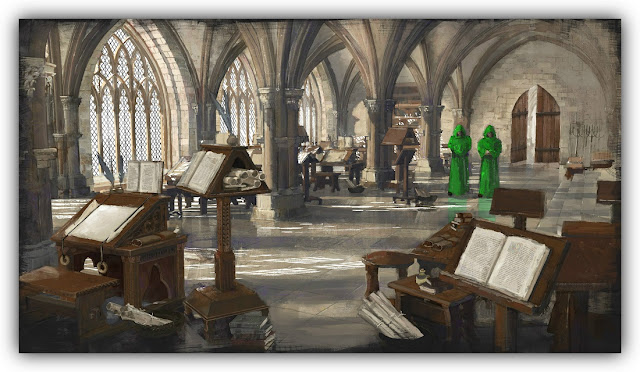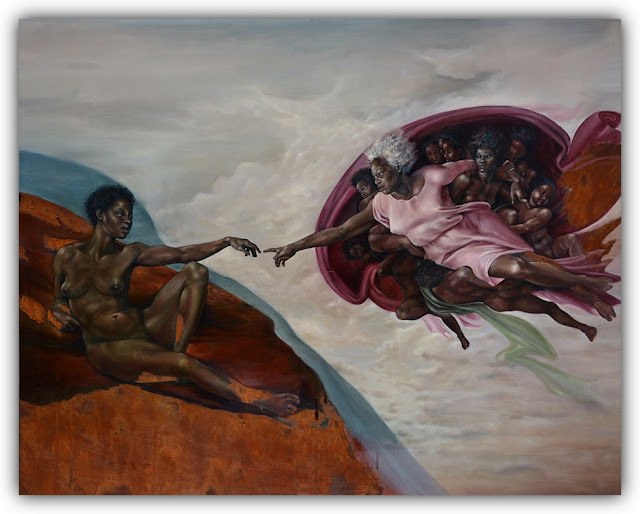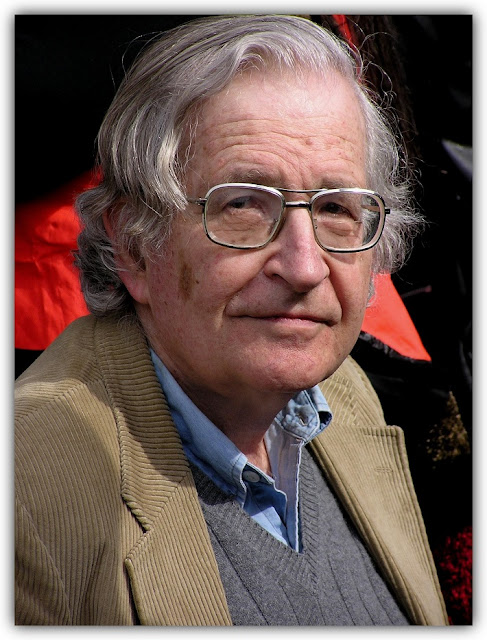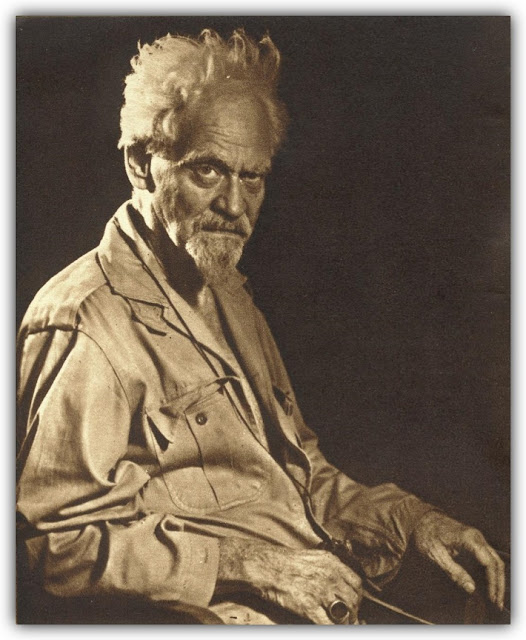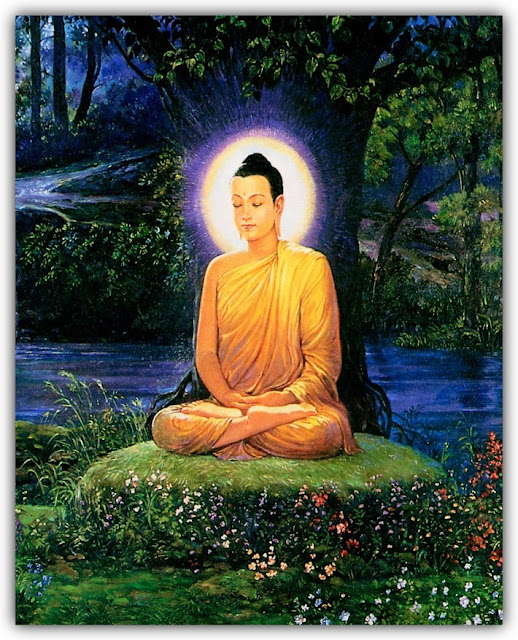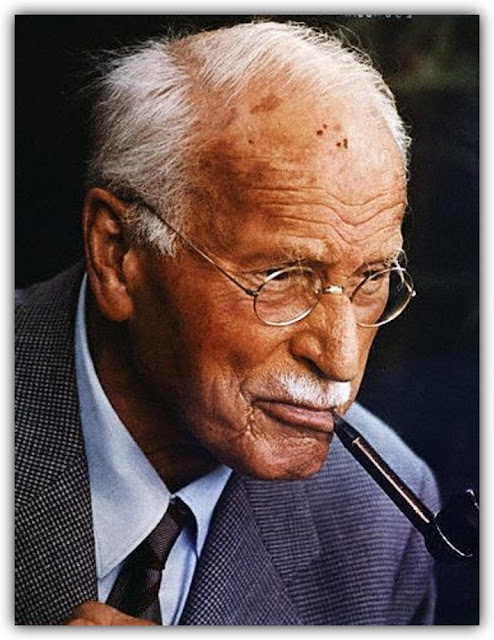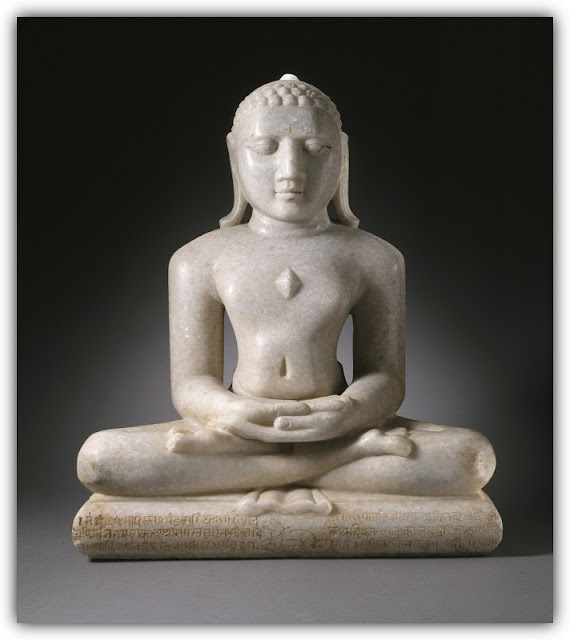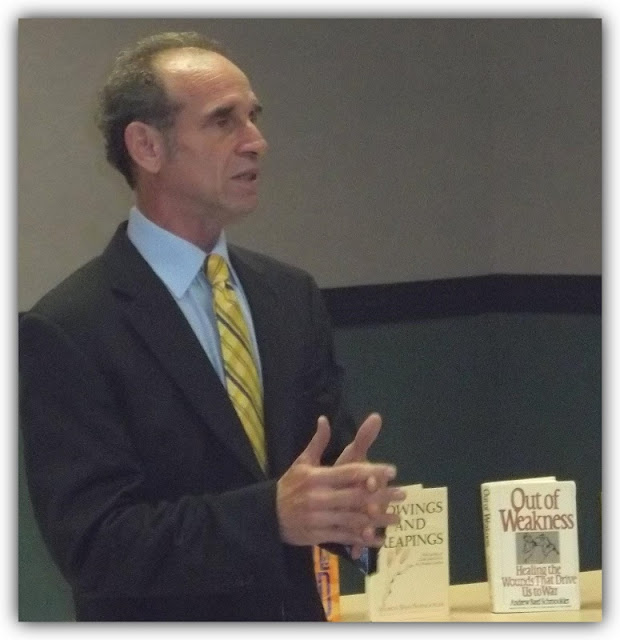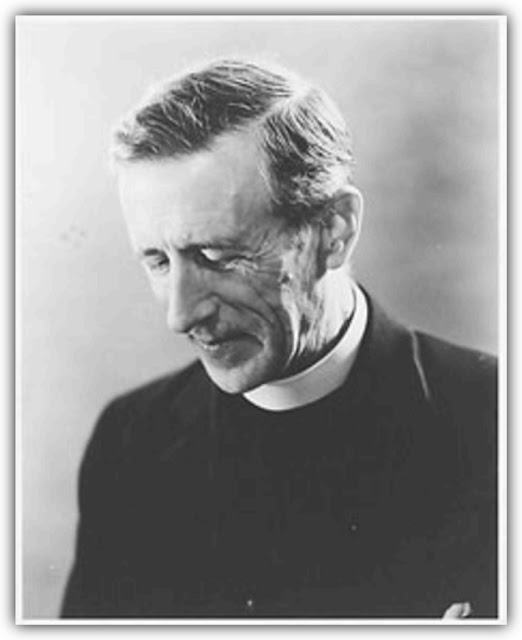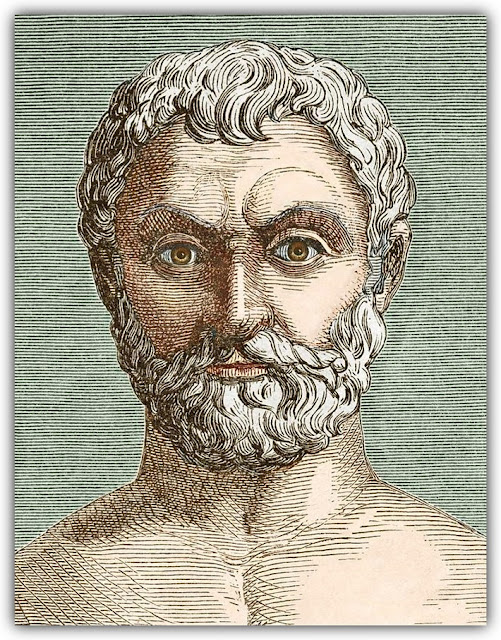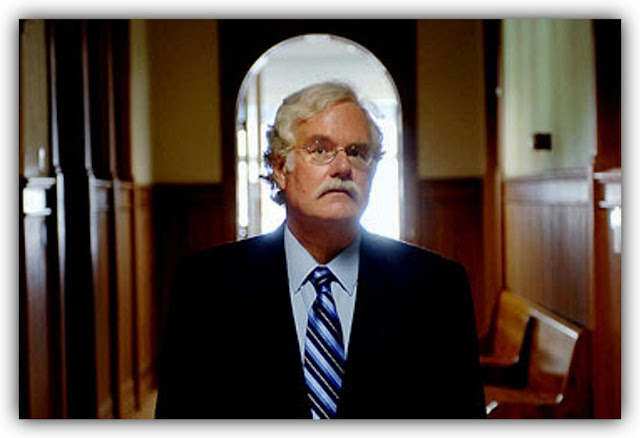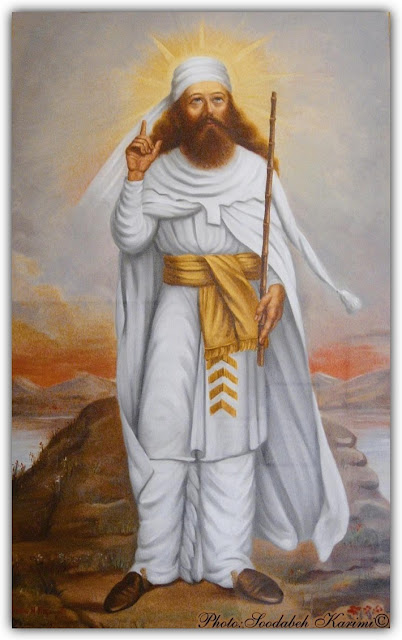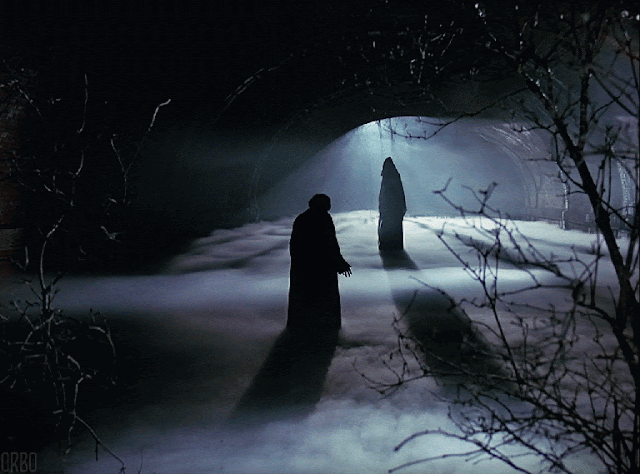Mortals
Prophets of Perístanom
Divine prophecy is never fixed or final. It is instead dynamic, evolving, and endless. Everyone is a sacred source of revelation, either actually or potentially. Indeed, the lowliest among us may at any time become the unexpected recipient and conveyor of the most profound wisdom. We are all prophets of Perístanom. Revelation visits us all, daily and nightly, in visions and fantasies, in dreams and nightmares, and for some even in hallucinations. And yet, every revelation is necessarily limited and circumscribed, sometimes even false, because our individual perspectives are, by nature, finite. Many of the individuals listed here have offered or represented those which are simply among the most historically impactful prophecies of human religion, of Perístanom.
Bahá’u’lláh: (Arabic: بهاء الله, “Glory of God”; 12 November 1817 – 29 May 1892), born Mírzá Ḥusayn-`Alí Núrí (Persian: میرزا حسینعلی نوری), was the founder of the Bahá’í Faith. He claimed to be the prophetic fulfilment of Bábism, a 19th-century outgrowth of Shí’ism, but in a broader sense claimed to be a messenger from God referring to the fulfilment of the eschatological expectations of Islam, Christianity, and other major religions. Bahá’u’lláh taught that humanity is one single race and that the age has come for its unification in a global society. His claim to divine revelation resulted in persecution and imprisonment by the Persian and Ottoman authorities, and his eventual 24-year confinement in the prison city of `Akka, Palestine (present day Israel), where he died. He wrote many religious works, most notably the Kitáb-i-Aqdas and the Kitáb-i-Íqán. There are two known photographs of Bahá’u’lláh. Outside of pilgrimage, Bahá’ís prefer not to view his photo in public, or even to display it in their private homes. [From Wikipedia]
Avram Noam Chomsky: (born December 7, 1928) is an American linguist, philosopher, cognitive scientist, logician, and political commentator and activist. Working for most of his life at the Massachusetts Institute of Technology (MIT), where he is currently Professor Emeritus, he has authored over 100 books on various subjects. Born to a middle-class Ashkenazi Jewish family in Philadelphia, Chomsky developed an early interest in anarchism from relatives in New York City. Later undertaking studies in linguistics at the University of Pennsylvania, where he obtained his BA, MA, and PhD, from 1951 to 1955 he was appointed to Harvard University’s Society of Fellows. In 1955 he began work at MIT, becoming a significant figure in the field of linguistics for his publications and lectures on the subject. In 1967 he gained public attention for his vocal opposition to U.S. involvement in the Vietnam War, coming to be associated with the New Left, and being arrested on multiple occasions for his anti-war activism. Expanding his linguistics work over subsequent decades, with Edward S. Herman he developed the propaganda model of media criticism. Following his retirement from active teaching, he continued his vocal public criticisms, praising the Occupy movement. He is credited as the creator or co-creator of the Chomsky hierarchy, the universal grammar theory, and the Chomsky–Schützenberger theorem. Chomsky is also well known as a political activist, and a leading critic of U.S. foreign policy, state capitalism, and the mainstream news media. Ideologically, he aligns himself with anarcho-syndicalism and libertarian socialism. Highly influential, between 1980 and 1992, Chomsky was cited within the field of Arts and Humanities more often than any other living scholar, and eighth overall within the Arts and Humanities Citation Index during the same period. He has been described as a prominent cultural figure, and was voted the “world’s top public intellectual” in a 2005 poll. Chomsky has also been described as the “father of modern linguistics” and a major figure of analytic philosophy. His work has influenced fields such as artificial intelligence, cognitive science, computer science, logic, mathematics, music theory and analysis, political science, programming language theory and psychology. [From Wikipedia]
Gerald Brosseau Gardner: (1884–1964), also known by the craft name Scire, was an English Wiccan, as well as an author and an amateur anthropologist and archaeologist. He was instrumental in bringing the Contemporary Pagan religion of Wicca to public attention, writing some of its definitive religious texts and founding the tradition of Gardnerian Wicca. Born into an upper-middle-class family in Blundellsands, Lancashire, Gardner spent much of his childhood abroad in Madeira. In 1900, he moved to colonial Ceylon, and then in 1911 proceeded to Malaya, where he worked as a civil servant, independently developing an interest in the native peoples and writing papers and a book about their magical practices. After his retirement in 1936, he traveled to Cyprus, penning the novel A Goddess Arrives before returning to England. Settling down near the New Forest, he joined an occult group, the Rosicrucian Order Crotona Fellowship, through which – he claimed – he encountered the New Forest coven, into which he was initiated in 1939. Believing the coven to be a survival of the pre-Christian Witch-Cult discussed in the works of Margaret Murray, he decided to revive the faith, supplementing the coven’s rituals with ideas borrowed from Freemasonry, ceremonial magic and the writings of Aleister Crowley to form the Gardnerian tradition of Wicca. Moving to London in 1945, following the repeal of the Witchcraft Act of 1736 he became intent on propagating this religion, attracting media attention and writing about it in High Magic’s Aid (1949), Witchcraft Today (1954) and The Meaning of Witchcraft (1959). Founding a Wiccan group known as the Bricket Wood coven, he introduced a string of High Priestesses into the religion, including Doreen Valiente, Lois Bourne, Patricia Crowther and Eleanor Bone, through which the Gardnerian community spread throughout Britain and subsequently into Australia and the United States in the late 1950s and early 1960s. Involved for a time with Cecil Williamson, Gardner also became director of the Museum of Magic and Witchcraft on the Isle of Man, which he ran until his death. Gardner is internationally recognised as the “Father of Wicca” among the Pagan and occult communities. His claims regarding the New Forest coven have been widely scrutinised, with Gardner being the subject of investigation for historians and biographers such as Aidan Kelly, Ronald Hutton and Philip Heselton. [From Wikipedia]
Gautama Buddha: also known as Siddhārtha Gautama, Shakyamuni, or simply the Buddha, was a sage on whose teachings Buddhism was founded. A native of the ancient Shakya republic in the Himalayan foothills, Gautama Buddha taught primarily in northeastern India. Buddha means “awakened one” or “the enlightened one.” “Buddha” is also used as a title for the first awakened being in an era. In most Buddhist traditions, Siddhartha Gautama is regarded as the Supreme Buddha (Pali sammāsambuddha, Sanskrit samyaksaṃbuddha) of our age. Gautama taught a Middle Way between sensual indulgence and the severe asceticism found in the Sramana (renunciation) movement common in his region. He later taught throughout regions of eastern India such as Magadha and Kośala. The times of Gautama’s birth and death are uncertain: most historians in the early 20th century dated his lifetime as circa 563 BCE to 483 BCE, but more recent opinion dates his death to between 486 and 483 BCE or, according to some, between 411 and 400 BCE. However, at a symposium on this question held in 1988, the majority of those who presented definite opinions gave dates within 20 years either side of 400 BCE for the Buddha’s death. These alternative chronologies, however, have not yet been accepted by all other historians. Gautama is the primary figure in Buddhism, and accounts of his life, discourses, and monastic rules are believed by Buddhists to have been summarized after his death and memorized by his followers. Various collections of teachings attributed to him were passed down by oral tradition, and first committed to writing about 400 years later. [From Wikipedia]
Homer: (Ancient Greek: Ὅμηρος [hómɛːros], Hómēros; born c. 8th century BC) was a Greek poet who is credited as the author of the Iliad and the Odyssey, two epic poems that are foundational works of ancient Greek literature. Homer is considered one of the most revered and influential authors in history. [From Wikipedia]
Jesus: (Greek: Ἰησοῦς Iesous; 7–2 BC to 30–33 AD), also referred to as Jesus of Nazareth, is the central figure of Christianity, whom the teachings of most Christian denominations hold to be the Son of God. Christianity holds Jesus to be the awaited Messiah of the Old Testament and refers to him as Jesus Christ, a name that is also used in non-Christian contexts. Virtually all modern scholars of antiquity agree that a historical Jesus existed, although there is little agreement on the reliability of the gospel narratives and how closely the biblical Jesus reflects the historical Jesus. Most scholars agree that Jesus was a Jewish preacher from Galilee, was baptized by John the Baptist, and was crucified in Jerusalem on the orders of the Roman prefect, Pontius Pilate. Scholars have constructed various portraits of the historical Jesus, which often depict him as having one or more of the following roles: the leader of an apocalyptic movement, Messiah, a charismatic healer, a sage and philosopher, or an egalitarian social reformer. Scholars have correlated the New Testament accounts with non-Christian historical records to arrive at an estimated chronology of Jesus’ life. Christians believe that Jesus was conceived by the Holy Spirit, born of a virgin, performed miracles, founded the Church, died by crucifixion as a sacrifice to achieve atonement, rose from the dead, and ascended into heaven, from which he will return. The great majority of Christians worship Jesus as the incarnation of God the Son, the second of three Persons of a Divine Trinity. A few Christian groups reject Trinitarianism, wholly or partly, as non-scriptural. In Islam, Jesus (commonly transliterated as Isa) is considered one of God’s important prophets. To Muslims, Jesus is a bringer of scripture and the child of a virgin birth, but neither divine nor the victim of crucifixion. Judaism rejects the belief that Jesus was the awaited Messiah, arguing that he did not fulfill the Messianic prophecies in the Tanakh. [From Wikipedia]
Emperor Jimmu: (神武天皇 Jinmu-tennō) was the first Emperor of Japan according to the traditional order of succession. He is also known as Kan’yamato Iware-biko no Sumeramikoto (神日本磐余彦天皇) and personally as Wakamikenu no Mikoto (若御毛沼命) or Sano no Mikoto (狹野尊). The Imperial house of Japan traditionally based its claim to the throne on its descent from Jimmu. While his accession is traditionally dated to 660 BC, no historically firm dates can be assigned to this early emperor’s life or reign, nor to the reigns of his early successors. Most modern historians dismiss this entire period as being beyond what history can know. The reign of Emperor Kimmei (509?–571 AD), the 29th emperor, is the first for which contemporary historiography is able to assign verifiable dates. [From Wikipedia]
Carl Gustav Jung: (26 July 1875 – 6 June 1961), often referred to as just C. G. Jung, was a Swiss psychiatrist and psychotherapist who founded analytical psychology. Jung proposed and developed the concepts of extraversion and introversion; archetypes, and the collective unconscious. His work has been influential in psychiatry and in the study of religion, philosophy, archeology, anthropology, literature, and related fields. The central concept of analytical psychology is individuation – the psychological process of integrating the opposites, including the conscious with the unconscious, while still maintaining their relative autonomy. Jung considered individuation to be the central process of human development. Jung created some of the best known psychological concepts including the archetype, the collective unconscious, the complex, and synchronicity. The Myers-Briggs Type Indicator (MBTI), a popular psychometric instrument, has been developed from Jung’s theory of personality typology. Jung saw the human psyche as “by nature religious” and made this religiousness the focus of his explorations. Jung is one of the best known contemporary contributors to dream analysis and symbolization. Though he was a practicing clinician and considered himself to be a scientist much of his life’s work was spent exploring tangential areas including Eastern and Western philosophy, alchemy, astrology, and sociology, as well as literature and the arts. His interest in philosophy and the occult led many to view him as a mystic. [From Wikipedia]
Kong Fuzi: (Confucius) (551–479 BC) was a Chinese teacher, editor, politician, and philosopher of the Spring and Autumn period of Chinese history. The philosophy of Confucius emphasized personal and governmental morality, correctness of social relationships, justice and sincerity. His followers competed successfully with many other schools during the Hundred Schools of Thought era only to be suppressed in favor of the Legalists during the Qin Dynasty. Following the victory of Han over Chu after the collapse of Qin, Confucius’s thoughts received official sanction and were further developed into a system known as Confucianism. Confucius is traditionally credited with having authored or edited many of the Chinese classic texts including all of the Five Classics, but modern scholars are cautious of attributing specific assertions to Confucius himself. Aphorisms concerning his teachings were compiled in the Analects, but only many years after his death. Confucius’s principles had a basis in common Chinese tradition and belief. He championed strong family loyalty, ancestor worship, respect of elders by their children (and in traditional interpretations) of husbands by their wives. He also recommended family as a basis for ideal government. He espoused the well-known principle “Do not do to others what you do not want done to yourself”, an early version of the Golden Rule. [From Wikipedia]
Krishna: (Sanskrit: कृष्ण Kṛṣṇa in IAST, pronounced [ˈkr̩ʂɳə]) is the eighth incarnation of Lord Vishnu in Hinduism. The name Krishna appears as the 57th and 550th name of Lord Vishnu in Vishnu Sahasranama of the Mahabharata, and is also listed in the 24 Keshava Namas of Lord Vishnu which are recited and praised at the beginning of all Vedic pujas. A puja is the ritualistic worship offered in Hinduism. According to the Bhagavata Purana, which is a sattvic purana, Krishna is termed as Svayam Bhagavan since he was the purna-avatara or full incarnation of the supreme god Vishnu. Krishna is often described and portrayed as an infant or young boy playing a flute as in the Bhagavata Purana, or as a youthful prince giving direction and guidance as in the Bhagavad Gita. The stories of Krishna appear across a broad spectrum of Hindu philosophical and theological traditions. They portray him in various perspectives: a God-child, a prankster, a model lover, a divine hero and the supreme being. The principal scriptures discussing Krishna’s story are the Mahabharata, the Harivamsa, the Bhagavata Purana, and the Vishnu Purana. Worship of the deity Krishna, either in the form of Vasudeva, Bala Krishna or Gopala can be traced to as early as 4th century BC. Worship of Krishna as svayam bhagavan, or the supreme being, known as Krishnaism, arose in the Middle Ages in the context of the bhakti movement. From the 10th century AD, Krishna became a favourite subject in performing arts and regional traditions of devotion developed for forms of Krishna such as Jagannatha in Odisha, Vithoba in Maharashtra and Shrinathji in Rajasthan. Since the 1960s the worship of Krishna has also spread in the West, largely due to the International Society for Krishna Consciousness. [From Wikipedia]
Laozi: (Chinese: 老子, English pronunciation: /ˌlaʊˈdzʌ/; fl. 6th century BC) was a philosopher of ancient China, best known as the author of the Tao Te Ching (often simply referred to as Laozi). His association with the Tao Te Ching has led him to be traditionally considered the founder of philosophical Taoism (pronounced as “Daoism”). He is also revered as a deity in most religious forms of Taoist philosophy, which often refers to Laozi as Taishang Laojun, or “One of the Three Pure Ones”. According to Chinese traditions, Laozi lived in the 6th century BC. Some historians contend that he actually lived in the 5th–4th century BC, concurrent with the Hundred Schools of Thought and Warring States period. A central figure in Chinese culture, both nobility and common people claim Laozi in their lineage. He was honored as an ancestor of the Tang imperial family, and was granted the title Táishāng xuānyuán huángdì, meaning “Supreme Mysterious and Primordial Emperor”. Throughout history, Laozi’s work has been embraced by various anti-authoritarian movements. [From Wikipedia]
James Ephraim Lovelock: CH, CBE, FRS, PhD (26 July 1919 – 26 July 2022) was an English independent scientist, environmentalist and futurist. He is best known for proposing the Gaia hypothesis, which postulates that the Earth functions as a self-regulating system. [From Wikipedia]
Mána (?)
Mána: [/ˈmɑna/] 🔊, future mortal woman of African, European, East Asian, and Southeast Asian ancestry, prophesied to be the future mother of Wirocénos, the intersexual and multiethnic demigod within the denomination of Androgynean Perístanom.
Moses: (Hebrew: מֹשֶׁה, Modern Moshe Tiberian Mōšéh ISO 259-3 Moše ; Arabic: موسى Mūsā ) was, according to the Hebrew Bible, the Qur’an, and Baha’i scripture, a religious leader, lawgiver, and prophet, to whom the authorship of the Torah is traditionally attributed. Also called Moshe Rabbenu in Hebrew (מֹשֶׁה רַבֵּנוּ, Lit. “Moses our Teacher/Rabbi”), he is the most important prophet in Judaism; he is also an important prophet in Christianity and Islam, as well as a number of other faiths. The existence of Moses as well as the veracity of the Exodus story are disputed amongst archaeologists and Egyptologists, with experts in the field of biblical criticism citing logical inconsistencies, new archaeological evidence, historical evidence, and related origin myths in Canaanite culture. Other historians maintain that the biographical details and Egyptian background attributed to Moses imply the existence of an historical political and religious leader who was involved in the consolidation of the Hebrew tribes in Canaan towards the end of the Bronze Age. According to the Book of Exodus, Moses was born in a time when his people, the Children of Israel, were increasing in numbers and the Egyptian Pharaoh was worried that they might help Egypt’s enemies. Moses’ Hebrew mother, Jochebed, hid him when the Pharaoh ordered all newborn Hebrew boys to be killed, and the child was adopted as a foundling by the Egyptian royal family. After killing an Egyptian slavemaster, Moses fled across the Red Sea to Midian, where he encountered the God of Israel in the form of a “burning bush”. God sent Moses back to Egypt to request the release of the Israelites. After the Ten Plagues, Moses led the Exodus of the Israelites out of Egypt and across the Red Sea, after which they based themselves at Mount Sinai, where Moses received the Ten Commandments. After 40 years of wandering in the desert, Moses died within sight of the Promised Land. Rabbinical Judaism calculated a lifespan of Moses corresponding to 1391–1271 BCE; Jerome gives 1592, and Ussher 1619 as birthyear. Although considered a messenger of God, Moses had difficulties with speech, which is documented in the Torah. Because of this, Aaron (the brother of Moses) would often do the talking for him. [From Wikipedia]
Muḥammad ibn ʿAbdullāh: (Arabic: محمد بن عبد الله بن عبد المطلب) (c. 20 April, 571 – 8 June, 632), also transliterated as Muhammad (Arabic: محمد), was a religious, political, and military leader from Mecca who unified Arabia into a single religious polity under Islam. He is believed by Muslims and Bahá’ís to be a messenger and prophet of God. Muhammad is almost universally considered by Muslims as the last prophet sent by God for mankind. While non-Muslims regard Muhammad to have been the founder of Islam, Muslims consider him to have been the restorer of an unaltered original monotheistic faith of Adam, Noah, Abraham, Moses, Jesus, and other prophets. Born in about 570 CE in the Arabian city of Mecca, Muhammad was orphaned at an early age and brought up under the care of his uncle Abu Talib. He later worked mostly as a merchant, as well as a shepherd, and was first married by age 25. Being in the habit of periodically retreating to a cave in the surrounding mountains for several nights of seclusion and prayer, he later reported that it was there, at age 40, that he received his first revelation from God. Three years after this event Muhammad started preaching these revelations publicly, proclaiming that “God is One”, that complete “surrender” to Him (lit. islām) is the only way (dīn) acceptable to God, and that he himself was a prophet and messenger of God, in the same vein as other Islamic prophets. Muhammad gained few followers early on, and was met with hostility from some Meccan tribes. To escape persecution, Muhammad sent some of his followers to Abyssinia before he and his followers in Mecca migrated to Medina (then known as Yathrib) in the year 622. This event, the Hijra, marks the beginning of the Islamic calendar, which is also known as the Hijri Calendar. In Medina, Muhammad united the tribes under the Constitution of Medina. After eight years of fighting with the Meccan tribes, his followers, who by then had grown to 10,000, took control of Mecca in the largely peaceful Conquest of Mecca. He destroyed the pagan idols in the city and then sent his followers out to destroy all of the remaining pagan temples in Eastern Arabia. In 632, a few months after returning to Medina from The Farewell Pilgrimage, Muhammad fell ill and died. By the time of his death, most of the Arabian Peninsula had converted to Islam, and he had united Arabia into a single Muslim religious polity. The revelations (or Ayah, lit. “Signs [of God]”)—which Muhammad reported receiving until his death – form the verses of the Quran, regarded by Muslims as the “Word of God” and around which the religion is based. Besides the Quran, Muhammad’s life (sira) and traditions (sunnah) are also upheld by Muslims as the sources of sharia law. They discuss Muhammad and other prophets of Islam with reverence, adding the phrase peace be upon him whenever their names are mentioned. While conceptions of Muhammad in medieval Christendom and premodern times were largely negative, appraisals in modern history have been far less so. [From Wikipedia]
Guru Nanak: (Punjabi: ਗੁਰੂ ਨਾਨਕ; Hindi: गुरु नानक, Urdu: گرونانک, [ˈɡʊɾu ˈnɑnək] Gurū Nānak) (15 April 1469 – 22 September 1539) is the founder of the religion of Sikhism and is the first of the ten Sikh Gurus, the eleventh guru being the living Guru, Guru Granth Sahib. His birth is celebrated world-wide on Kartik Puranmashi, the full-moon day which falls on different dates each year in the month of Katak, October-November. Guru Nanak travelled to places far and wide teaching people the message of one God who dwells in every one of God’s creations and constitutes the eternal Truth. He setup a unique spiritual, social, and political platform based on equality, fraternity love, goodness, and virtue. It is part of Sikh religious belief that the spirit of Guru Nanak’s sanctity, divinity and religious authority descended upon each of the nine subsequent Gurus when the Guruship was devolved on to them. [From Wikipedia]
Rishabhanatha: also known as Adinatha, is the traditional founder of Jainism. He was the first of the twenty-four tīrthaṅkaras or “ford-makers”, teachers who established the Jain teachings. According to legends, he belonged to the Ikshvaku dynasty of ancient Ayodhya. His son was believed to be the first chakravartin. Rishabhanatha is also known as Rikhava and is sometimes called Rishabha of Kosala. [From Wikipedia]
Andrew Bard Schmookler: (born April 19, 1946) is an award-winning American author, public speaker, social commentator, and radio talk show host. He was the nominee of the Democratic Party for U.S. Representative for Virginia’s 6th congressional district during the 2012 general election. [From Wikipedia]
Joseph Smith, Jr.: (December 23, 1805 – June 27, 1844) was an American religious leader who founded the Latter Day Saint movement, the predominant branch of which is Mormonism. At age twenty-four, Smith published the Book of Mormon, and by the time of his death fourteen years later, he had attracted tens of thousands of followers, established cities and temples, and founded a religion and a religious culture that continue to the present day. Smith was born in Sharon, Vermont, and by 1817 had moved with his family to western New York, then the site of intense religious revivalism of the Second Great Awakening. According to Smith, there he saw and heard a series of visions beginning in the early 1820s; in the first of these visions “two personages” (implied to be God the Father and the Son) appeared to him, and in subsequent visions an angel directed Smith to a buried book of golden plates inscribed with a Judeo-Christian history of an ancient American civilization. In 1830, Smith published what he said was an English translation of these plates, titled The Book of Mormon. Also in 1830, he organized the Church of Christ, claiming it to be a restoration of the early Christian church. Church members were later called “Latter Day Saints”, or “Mormons”. In 1831, Smith and his followers moved west with plans to build a communalistic American Zion. They gathered in Kirtland, Ohio, and established an outpost in Independence, Missouri, which was intended to be Zion’s “center place”. During the 1830s, Smith sent out missionaries, published revelations, and supervised construction of an expensive temple. However, due to the collapse of a church-sponsored bank and violent skirmishes with angry non-Mormon Missourians, Smith’s dreams of building Zion in Missouri and Ohio failed by the end of the decade. In the early 1840s, Smith established a new city called Nauvoo, Illinois, where he was both a spiritual and a political leader. In 1844, Smith and the Nauvoo city council angered non-Mormons by ordering a printing press destroyed, after it was used to publish an exposé critical of Smith’s power and practice of polygamy. During the ensuing controversy, Smith was imprisoned in Carthage, Illinois, and killed when a mob stormed the jailhouse. Smith is one of the most influential, charismatic, innovative, and controversial figures in American religious history. During his lifetime, Smith published many revelations and other texts that his followers regard as scripture. His teachings include unique views about the nature of God, cosmology, family structures, political organization, and religious collectivism. His followers regard him as a prophet comparable to Moses and Elijah, while detractors view him as a false prophet or religious impostor. Smith’s legacy includes many religious denominations, the largest of which are The Church of Jesus Christ of Latter-day Saints and the Community of Christ. [From Wikipedia]
Stérlamaqa: [/ˈsterlaˌmɑkwa/] 🔊, (literally ‘the star-girl’), Stérlamaqa was a legendary woman born to the people of the Kurgan culture on the Pontic-Caspian steppe at some time during the Neolithic period. She was born “among the rivers”, possibly between the Don River and the Volga River near modern Volgograd, Russia. Folklore tells that when Stérlamaqa was a young girl, she dreamt of an intersexual and multiethnic demigod who would one day come to save the world. This prophetic pronouncement coincided with both a festival on the northern solstice and with the appearance overhead of a new star in the summer sky—presumably a supernova, and, by way of speculation, perhaps the specific event that created the supernova remnant known as the Cygnus Loop. Her prophecy was to prove influential on the Scythians—the succeeding historical people of the steppe whose shamans, the Enaree, were notably androgynous—and, after long being suppressed and virtually forgotten, would eventually give rise to Androgynean Perístanom itself. Stérlamaqa is believed by some to have been the first in an unbroken succession of female shamans of her own clan, and her prophecy may possibly have been orally communicated matrilineally through some nearly three-hundred generations to the present day. If true, it would be the longest lived direct oral tradition known in the world.
The Proto-Indo-Europeans were the speakers of the Proto-Indo-European language (PIE), a reconstructed prehistoric language of Eurasia. Knowledge of them comes chiefly from the linguistic reconstruction, along with material evidence from archaeology and archaeogenetics. According to some archaeologists, PIE speakers cannot be assumed to have been a single, identifiable people or tribe, but were a group of loosely related populations ancestral to the later, still partially prehistoric, Bronze Age Indo-Europeans. This view is held especially by archaeologists who posit an original homeland of vast extent and immense time depth. However, this view is not shared by linguists, as proto-languages generally occupy small geographical areas over a very limited time span, and are generally spoken by close-knit communities such as a single small tribe. The Proto-Indo-Europeans likely lived during the late Neolithic, or roughly the 4th millennium BCE. Mainstream scholarship places them in the forest-steppe zone immediately to the north of the western end of the Pontic-Caspian steppe in Eastern Europe. Some archaeologists would extend the time depth of PIE to the middle Neolithic (5500 to 4500 BCE) or even the early Neolithic (7500 to 5500 BCE), and suggest alternative location hypotheses. By the late 3rd millennium BCE, offshoots of the Proto-Indo-Europeans had reached Anatolia, the Aegean, Western Europe, Central Asia and southern Siberia. [From Wikipedia]
Pierre Teilhard de Chardin: SJ (May 1, 1881 – April 10, 1955) was a French philosopher and Jesuit priest who trained as a paleontologist and geologist and took part in the discovery of Peking Man. Teilhard conceived the idea of the Omega Point (a maximum level of complexity and consciousness towards which he believed the universe was evolving) and developed Vladimir Vernadsky’s concept of Noosphere. Teilhard de Chardin has two comprehensive works. First, The Phenomenon of Man, sets forth a sweeping account of the unfolding of the cosmos and the evolution of matter to humanity to ultimately a reunion with Christ. Following the leads of St. Ambrose and St. Augustine, he abandoned literal interpretations of creation in the Book of Genesis in favor of an allegorial and theological interpretations. The second comprehensive work of Teilhard de Chardin is The Divine Milieu which attempted to do two things. First, in the 19th and early 20th centuries there was a belief among some Catholics and other Christians that in order to be “holy” one had to devote himself or herself to purely religious activity and that secular work had no lasting value. Teilhard de Chardin, consistent with the Jesuit motto of “finding God in all things”, wanted to demonstrate that secular work (including his own scientific work) was an integral element of creation and the Incarnation, so that for religious reasons, Christians should be committed to whatever work they were doing and offering it up for the service of God. Teilhard wants to show how all human activities and efforts toward personal growth and human progress can be used to help the growth and development of the Body of Christ. Not only are human efforts useful in this regard, but they are also somehow necessary. Even though people perform these actions as ordinary human beings, and they look like ordinary human actions, they are simultaneously being transformed in the divine milieu and become actions done in, with, and through Christ. Some of Teilhard de Chardin’s ideas came into conflict with certain officials in the Roman Curia and in his own Jesuit order. Specifically, Teilhard’s superiors thought that Teilhard’s views on the doctrine of original sin were contrary to Catholic doctrine. As a result, many of Teilhard’s writings were prohibited from being published during his lifetime. However, in recent decades, largely due to the writings and speeches of Pope Benedict XVI and Cardinal Henri de Lubac, Teilhard’s de Chardin’s ideas have become incorporated as part of mainstream Catholic theology. Vatican spokesman Fr. Federico Lombardi said in July 2009: “By now, no one would dream of saying that [Teilhard] is a heterodox author who shouldn’t be studied.” [From Wikipedia]
Thales of Miletus: (Greek: Θαλῆς (ὁ Μιλήσιος), Thalēs; c. 624 – c. 546 BC) was a pre-Socratic Greek philosopher from Miletus in Asia Minor, and one of the Seven Sages of Greece. Many, most notably Aristotle, regard him as the first philosopher in the Greek tradition. According to Bertrand Russell, “Western philosophy begins with Thales”. Thales attempted to explain natural phenomena without reference to mythology and was tremendously influential in this respect. Almost all of the other Pre-Socratic philosophers follow him in attempting to provide an explanation of ultimate substance, change, and the existence of the world without reference to mythology. Those philosophers were also influential and eventually Thales’ rejection of mythological explanations became an essential idea for the scientific revolution. He was also the first to define general principles and set forth hypotheses, and as a result has been dubbed the “Father of Science”, though it is argued that Democritus is actually more deserving of this title. [From Wikipedia]
Frank Jennings Tipler: (born February 1, 1947) is a mathematical physicist and cosmologist, holding a joint appointment in the Departments of Mathematics and Physics at Tulane University. Tipler has authored books and papers on the Omega Point, which he claims is a mechanism for the resurrection of the dead. Some have argued that it is pseudoscience. Tipler was a fellow of the International Society for Complexity, Information, and Design, a society which advocated intelligent design. [From Wikipedia]
Wirocénos (?)
Wirocénos: [/ˌwirɔˈgwɛnɔs/] 🔊, (Latin: Androgynus), future demigod, intersexual and multiethnic, prophesied within the denomination of Androgynean Perístanom, child of Mána and Djéus Patér.
Zoroaster: also known as Zarathustra (Avestan: Zaraϑuštra), was the founder of Zoroastrianism. Though he is often mentioned as an Iranian, his birthplace is uncertain. It is now widely thought that he was born in the eastern part of the Iranian Plateau. He is credited with the authorship of the Yasna Haptanghaiti as well as the Gathas, hymns which are at the liturgical core of Zoroastrianism. Most of his life is known through the Zoroastrian texts. The language spoken by Zoroaster, Old Avestan, used for composing the Yasna Haptanghaiti and the Gathas, on archaeological and linguistic grounds, is dated to have been spoken probably in the first half of the 2nd millennium BCE. [From Wikipedia]




